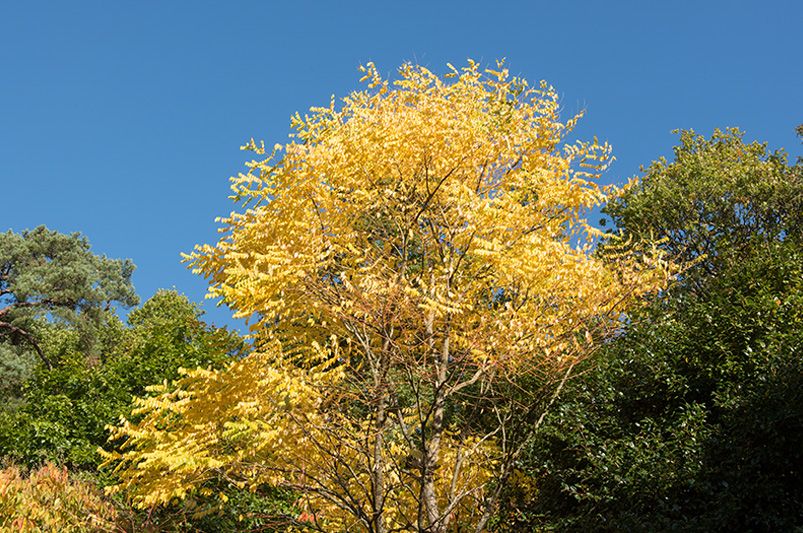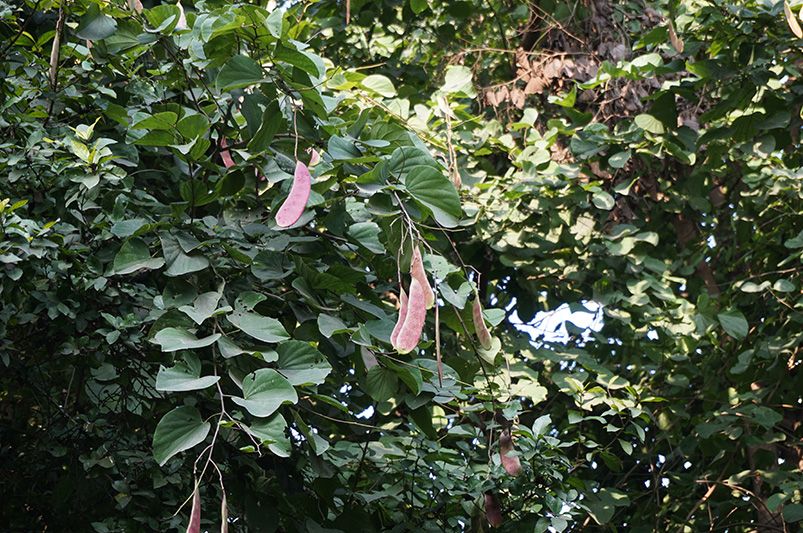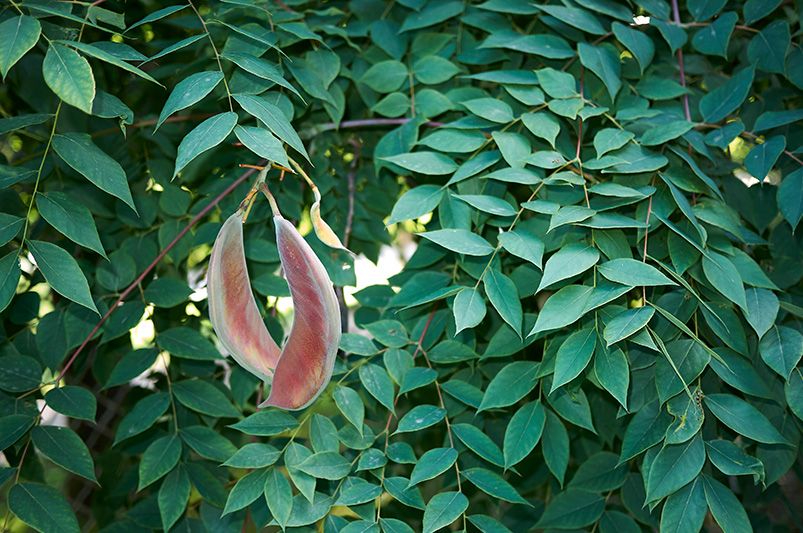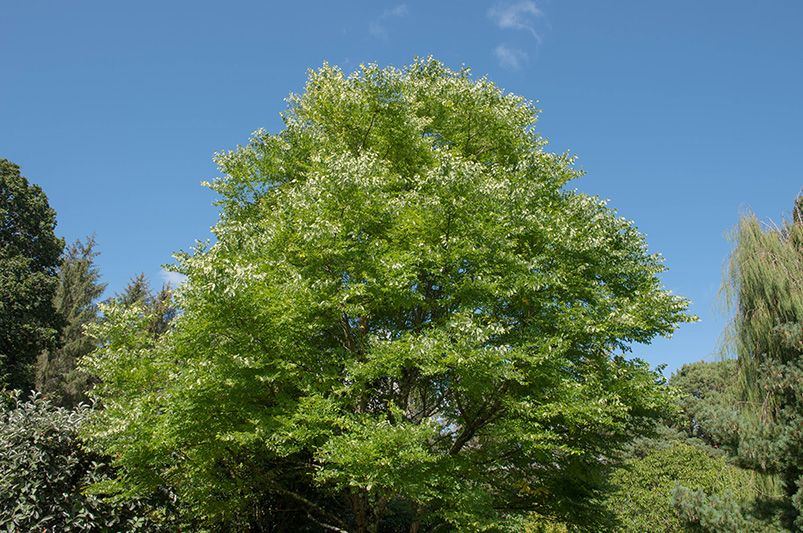
A Guide to Growing the Kentucky Coffee Tree
Published: 18/04/2024 | Updated: 08/06/2024
Kentucky coffee tree (Gymnocladus dioicus) is a majestic, awe-inspiring, and resilient deciduous tree that can reach heights of 65-75 feet and widths of 40-50 feet, adding a touch of grandeur wherever it is planted.


The Kentucky coffee tree adds a burst of color and freshness to your yard with its vibrant green foliage and fragrant blossoms. As autumn approaches, the vibrant green hue transforms into a captivating golden-yellow, enhancing your yard with a breathtaking radiance!
Kentucky Coffee Tree
One of the most impressive variations of the coffee tree is Oklahoma's own Kentucky Coffee tree. A big, native, deciduous tree with an oval, open, to irregular habit that grows slowly to moderately. It has enormous, multi-leafed, pinnately complex leaves that are two feet broad and three feet long. The leaves are pinkish-bronze when they first appear in the late spring and eventually turn bluish-green as they grow. Late spring to early summer sees panicles of greenish-white blooms develop at the tips of the branches. The female trees contain clusters of huge, purplish-brown or reddish-brown seed pods, and their leaves turn yellow in the autumn.
The magnificent Kentucky coffee tree thrives in expansive, full-sun environments. Except for intense heat, it can grow in a variety of soil types and conditions and is resilient to all temperatures and humidity levels.
What You Need To Know About the Kentucky Coffee Tree
-
It likes to be sown in direct sunlight.
-
The tree can withstand clay, but it prefers sandy loam soil.
-
A drought-tolerant species, this tree prefers low-humidity conditions and should not be overwatered.
-
Since it fixes nitrogen in the soil, avoid fertilizing with nitrogen-containing products.
-
Young trees should not be pruned; weak branches of mature trees should be clipped.

Sunlight Needs
At least six to eight hours of direct sunlight are ideal for the Kentucky coffee tree's health. It's a lover of bright light, although a tiny amount of partial shade will not harm the tree.
Soil Preferences
This tree may thrive in a variety of soil types; it does very well in clay, however it grows slightly better in sandy loam. An excess of either alkalinity or acidity doesn't bother it. It can also thrive in arid areas because it is drought-tolerant. Planting too close to a swamp or marshy area is not a good idea since too much damp soil may eventually harm the roots.
Watering Needs
This tree will benefit from extra hydration at the base every seven to ten days during prolonged droughts. Other than that, though, it can withstand droughts rather well and shouldn't need more water.
Humidity and Temperature
The Kentucky coffee tree is extremely durable in the winter and isn't too picky about humidity or temperature. More than zone eight is probably not going to be good for it. In hot, dry regions, it struggles.
Treat Your Loved One to a World of Botanical Delights With Our 3D Gift Card
Applying Fertiliser
Apply fertilizer to the Kentucky coffee tree using materials that encourage robust, woody development as opposed to excessive leaf growth. Since the tree fixes nitrogen, don't fertilize it with nitrogen-containing items. (It even functions to provide nitrogen to any nearby healthy plant)
How to Prune
The Kentucky coffee tree is best pruned in late winter or early spring when the threat of the coldest nighttime temperatures has passed. Young trees won't require any pruning in the first few years unless the branches sustain damage due to their slow growth behavior. To encourage a stronger structure, overly long (and hence weaker) branches should be clipped when they are still young.
What Is the Look and Aroma of Kentucky Coffee Tree Flowers?
The female trees have striking panicle clusters of pale greenish-white, star-shaped flowers that are 12 inches long. The scent of the blossoms is reminiscent of roses. Male trees do flower, but they are not grown for their blooms; instead, they are small and easy to miss. Make sure to ascertain the gender of any Kentucky coffee tree seedlings you purchase from a nursery.
How to Induce Blooms in Kentucky Coffee Trees
On female trees, the pale green panicles appear in late spring or early summer (late May to early June). For optimal blossoms, a flowering female tree will need six to eight hours of bright indirect light exposure every day.

Typical Kentucky Coffee Tree Issues
Pests and Diseases
Fortunately, there are no significant pest or disease issues with this tree.
Litter Leaves
Because the leaves on both male and female trees are so big and fall off the branches in the early fall, "leaf litter" from these trees can become an issue. Beginning in the spring, the female trees' dropped seed pods can also make a bit of a mess. Because of this, parks and other open spaces—like a sizable backyard—are better suited for the tree than streets.
Twisted Branches
The tree's broad, twigless, naked branches will exhibit a twisted zig-zag pattern once the leaves fall. This tree's dramatic winter and fall aspect is enhanced by its silhouette, making it ideal for a 'haunted Halloween' scene that some gardeners would find amusing or not.
Yellowing of the Leaves
This tree may have yellowish leaves that wilt and fall off too soon because it dislikes being overwatered. The tree can typically withstand the occasional flood.
Absent Leaves
One of the last trees to leaf out in the spring and the first to drop leaves in the autumn is the Kentucky coffee tree. Bare branches from autumn through most of spring are not unusual because the trees are leafless for much of the year.

Embrace the Beauty and Ease of the Kentucky Coffee Tree
The Kentucky Coffee Tree's majestic stature, exquisite foliage, and fragrant blossoms effortlessly add a touch of natural charm to any garden or landscape. Its adaptability to various soil types and conditions from moist soil to loamy, along with its drought tolerance, make it a hassle-free addition to your outdoor space. What truly sets the Kentucky Coffee Tree apart is its ease of maintenance. Unlike some finicky coffee plants that demand constant attention and care, these resilient species thrive with minimal intervention. Whether you're a seasoned gardener or a novice enthusiast, cultivating a Kentucky Coffee Tree is a hassle-free endeavor that promises years of enjoyment and beauty.
But how do you bring your coffee tree dreams to life with flair? Enter Shrubhub, the landscape experts, your brewing buddy in transforming your outdoor space into a caffeinated haven. With their expertise, they'll grind through the details, ensuring your garden layout is brewed to perfection. From selecting the prime spot for your tree to crafting a landscape design that's grounds for envy, they'll espresso their creativity and expertise to make your vision a reality.


